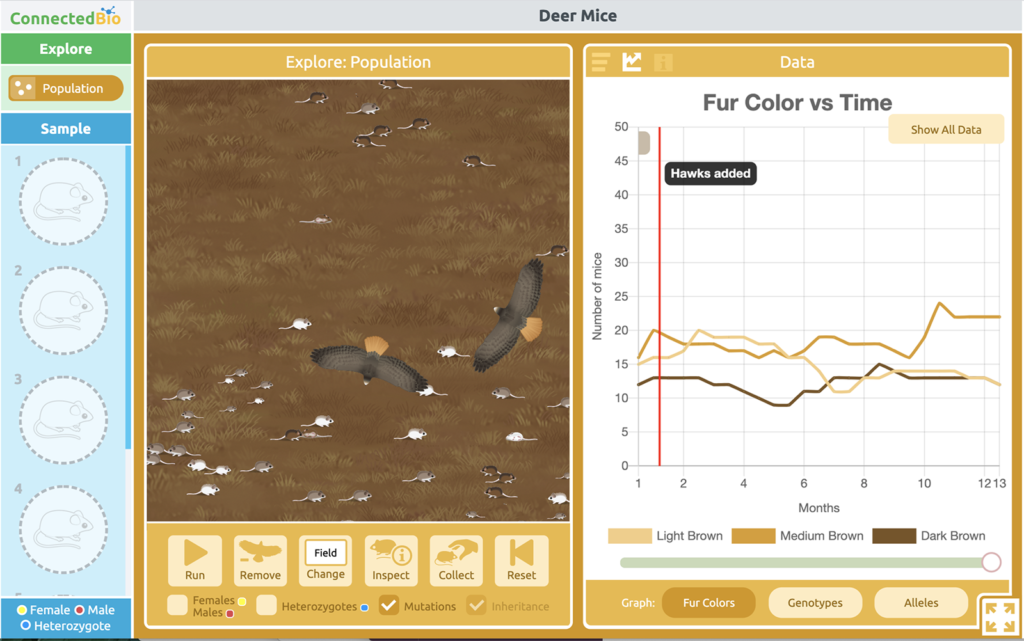Rebecca Ellis is a research associate at Michigan State University.
The Connected Biology project (ConnectedBio), a collaboration between the Concord Consortium and Michigan State University, recently released Deer Mouse Fur Color: From the Field to the Beach. This free, Next Generation Science Standards-aligned set of 15 lessons guides students through a nuanced understanding of the evolution of deer mouse fur color in Florida. Students explore multi-level simulations, answer probing questions, develop models, and more, as they learn how ecology, cell biology, molecular biology, inheritance, and population genetics all work together for the evolution of a single phenomenon. The lessons can be used in face-to-face, virtual, and hybrid classrooms. The Deer Mouse Case also includes a teacher edition, a real-time dashboard, support materials, and student notebooks.

Population level of the ConnectedBio Multi-Level Simulation from “Adaptation is for Populations.”
We have also developed three short stand-alone lessons about mouse fur that focus on particular areas of interest. Each lesson takes approximately one to two class periods.
- Adaptation is for Populations. Students examine the population level of the multi-level simulation to investigate the mechanism of natural selection on a population. In particular, students study the influence of the environment and hawks on deer mice. (PDF Version)
- Demystifying Punnett Squares with ConnectedBio. Students breed mice and discover fur color inheritance patterns by examining cumulative pie charts. Students collect their own data and uncover the influence of variation on offspring ratios, creating a great lead-in to understanding and using Punnett squares to predict those ratios. (PDF Version)
- Relative Frequency of Alleles. Students learn to calculate relative frequency of both fur colors and alleles, apply this to a deer mouse population, and then design their own experiment to measure evolution over time. (PDF Version)
An extra lesson focuses exclusively on protein synthesis, removed from the deer mouse context. This lesson can be taught individually or in conjunction with the full Deer Mouse Case.
- From DNA Mutations to Protein Structure. Students use a Protein Synthesis Simulation to examine how the DNA nucleotide sequence influences an amino acid chain. To combat the common misconception that mutations always have a big effect on an organism, students use the simulation to complete a series of challenges by mutating nucleotides in a DNA sequence. Students are also guided in a mini-research project on the impact of mutations. (PDF Version)
All of the ConnectedBio stand-alone lessons are inquiry-based and data-driven. Student learning is embedded in investigation and experimentation. Students learn material by exploring simulations, making observations, and engaging in questions. The stand-alone lessons are also aligned to the Next Generation Science Standards (NGSS).
We invite you to try these lessons in your classroom or to assign them as homework. Let us know what you and your students think by completing the survey at the end of each lesson.